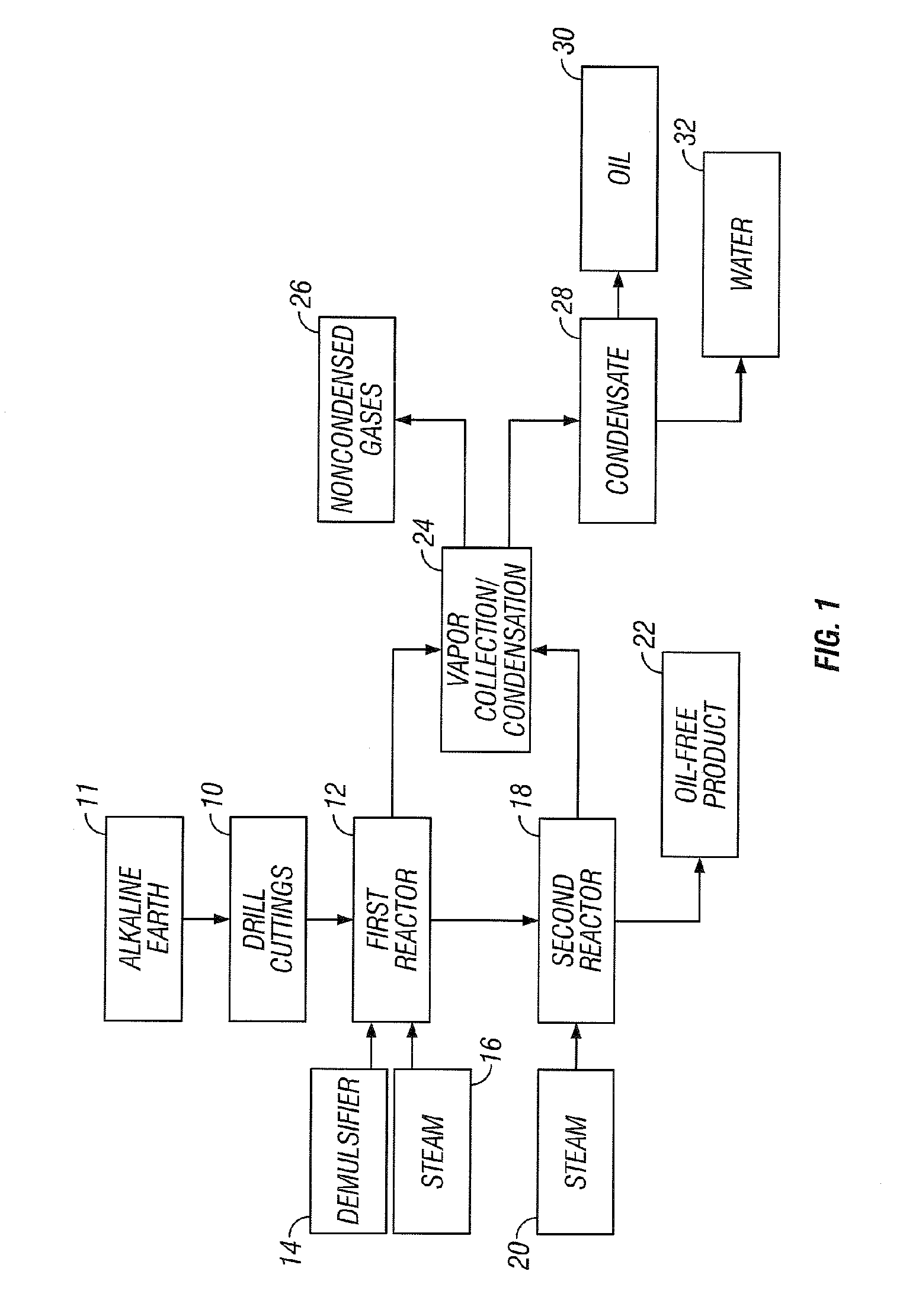Oil contaminated substrate treatment method and apparatus
- Summary
- Abstract
- Description
- Claims
- Application Information
AI Technical Summary
Benefits of technology
Problems solved by technology
Method used
Image
Examples
example
[0067] A test of the process and apparatus is conducted to treat drill cuttings contaminated with an oil-based drilling mud. The cuttings have an oil content of approximately 13% and a pH of approximately 11.0. The cuttings are supplied at ambient temperature and are continuously processed at a rate of 900 kg / h (2000 lb / h) (15 kg / min; 30 lb / min) two mixing stills arranged in series, each having a capacity of approximately 200 liters (40 gal), twin parallel shafts approximately 2 m (5 ft) in length with 25 paddles / shaft and a 0.2 m (0.7 ft) diameter and a tip speed of at least 3 m / s (7 ft / s). The average residence time of the cuttings in each mixing still is approximately 80 seconds. Steam is continuously added at approximately 30 psi (200 KPa) to an inlet adjacent the outlet of the first mixing still at a rate of 2 kg / min (4 lb / min), and the temperature in the first mixing still is maintained at greater than 100° C. (212° F.) near the outlet. A second steam source is continuously in...
PUM
 Login to View More
Login to View More Abstract
Description
Claims
Application Information
 Login to View More
Login to View More - R&D
- Intellectual Property
- Life Sciences
- Materials
- Tech Scout
- Unparalleled Data Quality
- Higher Quality Content
- 60% Fewer Hallucinations
Browse by: Latest US Patents, China's latest patents, Technical Efficacy Thesaurus, Application Domain, Technology Topic, Popular Technical Reports.
© 2025 PatSnap. All rights reserved.Legal|Privacy policy|Modern Slavery Act Transparency Statement|Sitemap|About US| Contact US: help@patsnap.com



